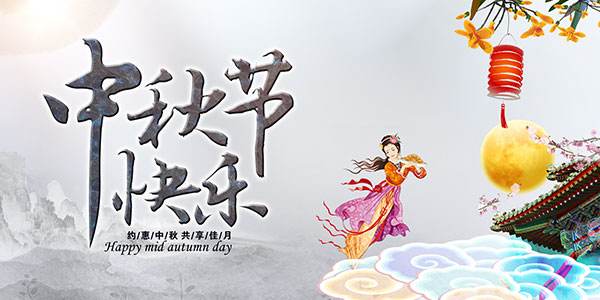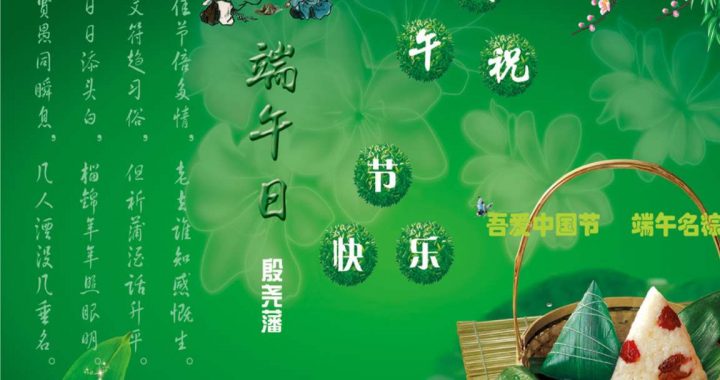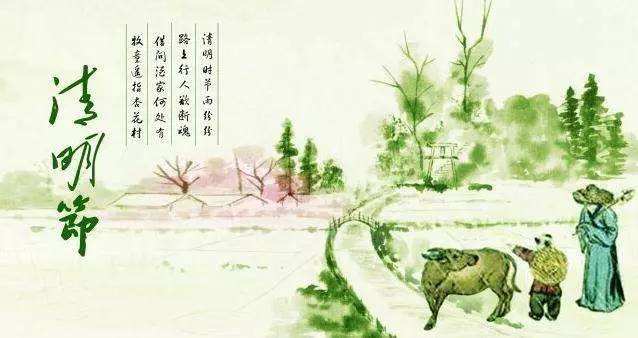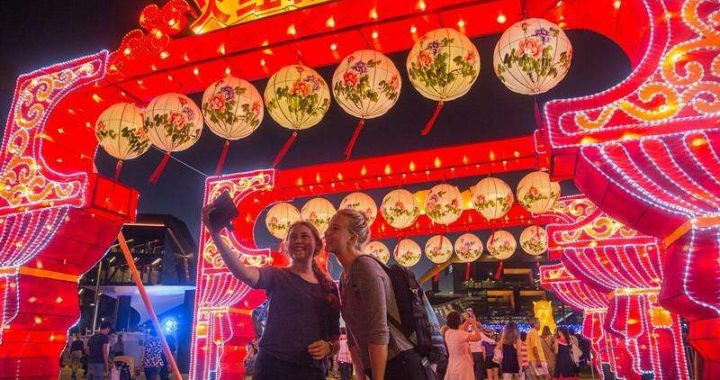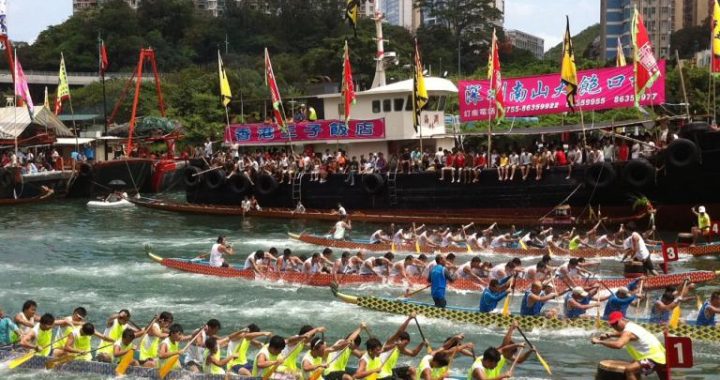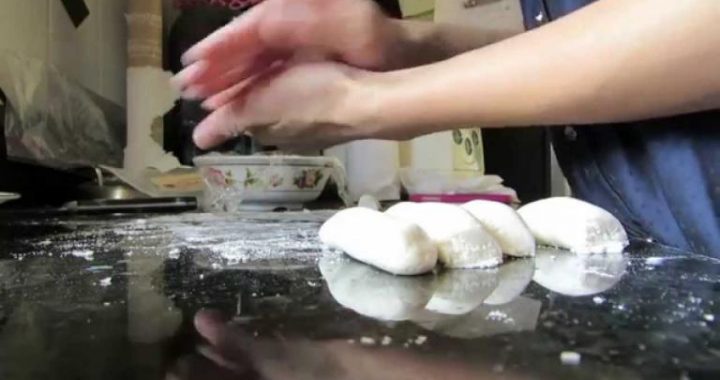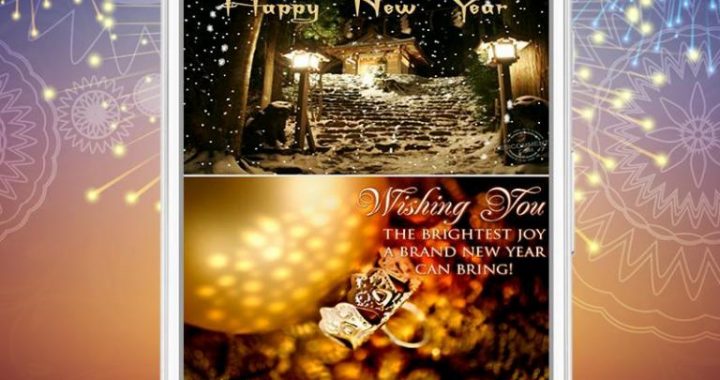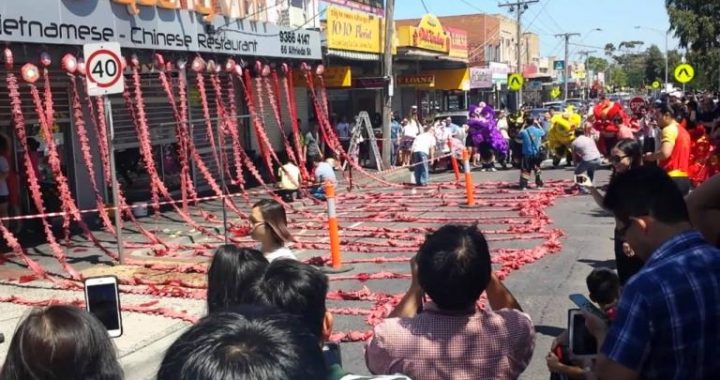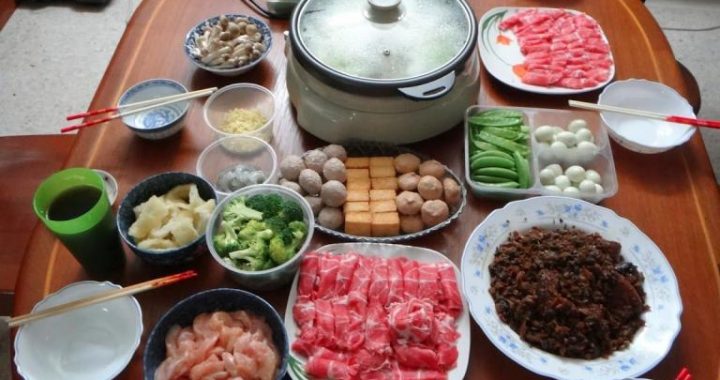Festivals from Ancient Time:Spring Begins,Winter Solstice Day,Laba and Xiaonian
8 min readChina is a country that attaches great importance to agriculture,so the days of solar terms become very important festivals.Customs of these festivals originated from ancient sacrifice ceremonies and religious belief.
Festivals like the Spring Begins,Winter Solstice,Laba and Xiaonian all started at a very early time.Spring Begins andWinter Solstice used to be grand festivals:Spring Begins is a day to encourage farming and Winter solstice is a day to worship heaven and ancestors.The four festivals all have certain festival food and customs left to today.
1)Spring Begins
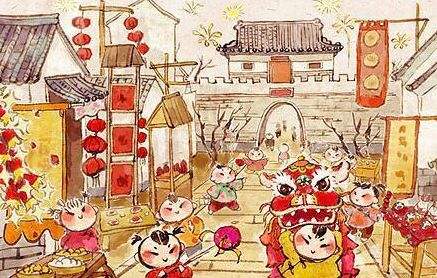
Spring Begins is the very first solar term among the 24solar terms in the lunar calendar.It is usually one day between February 3rd and February 5th in Gregorian calendar,marking the coming of spring and the beginningof farming in a new year.As ancient people regarded the ceremony of four seasons as important and the Spring Begins signified the beginning of the four seasons,it became a festival bearing more prominance than others in the solar terms.
As the saying goes,the whole year’s work depends on a good start in spring.Spring is a season for ploughing.In ancient times,the government would hold welcoming spring and beating spring ceremonies.In Eastern Han dynasty,a set of spring welcoming rituals had come into being. To welcome spring was to welcome the earthen ox and God of Grain. The earthen ox is ox made of earth. As ox is the symbol of ploughing, it was used as a symbol in spring welcoming ceremony. God of Grain is the god in charge of farming. Its statue used in the spring welcoming ceremony was also made of earth. As he lived in the east, people would hold the ceremony in the east suburban area. Since Han and until Song dynasties, the ceremony was held on the Spring Begins. After Song dynasty, it was held one day before the Spring Begins. In Ming and Qing, the state regulated the spring welcoming ceremony and it became more lively with drama and performance, attracting more citizens to join and watch. People would scatter grains and beans to the marching group in the ceremony so as to pray for good fortune.
After Song dynasty, the government would hold a ceremony called”Beating Spring Ox”on the day of Spring Begins with the purpose of encouraging farming. Officials would use a colorful club to beat an earthen ox after worshipping the God of Grain and this was the so-called “Scourging Spring”or “Beating Spring”. Even today, people in some places name Spring Begins as Beating Spring. After the ritual of “Beating Spring”, people would compete in grabbing the scattered pieces of the earthen ox because they believed that the earth of the ox would dispel pests or ants, and bring them good harvest in farming and abundant production of silk and livestock.
On the day of Spring Begins, the folks have the convention to eat spring cakes, spring rolls and spring plate.
Spring cake is a kind of thin pancake made from flour powder through pokering or braising. It is often eaten together with a fried mixture dish with bean sprout, leek and potato noodle. People may also fold the pancake andpack the mixture dish to eat. Spring plate is usually a mosaic dish with leek, radish and onion. Spring rolls refer to the fried rolls with stuffing inside.
2) Winter Solstice

As early as the Spring and Autumn period more than 2,500 years ago, China had set the time for the Winter Solstice through observing the sun with Tu Gui(an ancient timing apparatus). Winter Solstice was the very first one among the 24 solar terms that got its time settled. It was on December 22nd or 23rd in the solar calendar.
In Han dynasty, the government held celebrations for the Winter Solstice. In Tang and Song, it was a day to worship the heaven and ancestors. The emperor would have to go to the environs to hold the Heaven worshipping ceremony. All citizens would need to worship their ancestors. Emperors in Ming and Qing would hold the Heaven worshipping ceremony in the Temple of Heaven, which was located in southern suburban area in old Beijing (belonging to Chongwen District in Beijing today). The Temple of Heaven include two altars named Qigu(praying for grain) Altar and Yuanqiu (round mound) Altar. The Yuanqiu Altar is the sacred place for Heaven worshippingceremony. The architecture structure favors the number 9, symbolizing the 9 layers of heaven.
After thousands years of development, Winter Solstice as a festival had got unique food custom. In northern China, people would kill a sheep or eat dumplings and wontons. In southern China people would eat Winter Solstice rice and long thread noodles. Among the customs, eating dumplings had been the most popular. It was said that the custom was left by the Medical Sage Zhang Zhongjing. He frittered mutton, pepper and medical materials and stuffed them intodough pieces in the shape of ears. Then he boiled them and sent them to people to eat to heal their frozen ears. Later people made this food in every Winter Solstice. The ear-like food was later known as Jiaozior dumplings. Even today there is a saying in Henan province, the hometown of Zhang Zhongjing,”If you don’t eat dumplings in Winter Solstice, nobody would cure your frozen ears.”
3) Laba Festival
Laba Festival is on the eighth day of the twelfth month in the lunar calendar. It is related to the Lari Festival in ancient times. Lari Festival had not been on a fixed day until Southern and Northern dynasties, when it was influenced by Buddhism and got a fixed time on the eighth day of the twelfth month, which was also the Enlightenment Day of the Buddha. Therefore, many customs of Laba Festival are related to Buddhism.
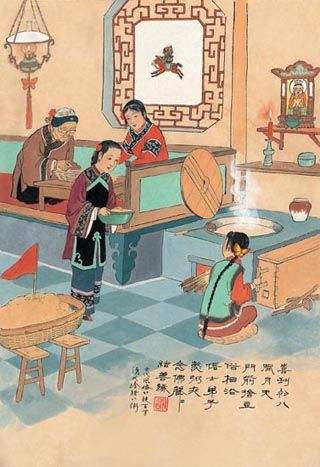
In Tang dynasty, there was the custom of bathing Buddha in temples on Laba Festival. In Northern Song dynasty people not only had the custom of bathing Buddhabut also sent congee to Buddhists. Since then eating Laba congee had become a popular custom on Laba Festival. In Yuan dynasty, Laba congee continued to be an important part of Laba Festival, but the custom of bathing Baddha could not be seen anymore. In Ming and Qing dynasties, having laba congee became even more popular. People all over China celebrated the Laba Festival with Laba congee.
In present days, the folks also make Laba congee and send congee to poor people or beggars. In Yonghe Lama Temple, monks make Laba congee and give it to people every year.
Usually the first boiler of congee will be offered to Buddha and the rest will be given to people who accept it as a prayer for safety and good fortune.A big bronze congee boiler made in Qing dynasty is still well kept under the foot of the drum tower in front of the hall for Celestial King in Yonghe Lama Temple. Now the boiler is not used to make congee but to be watched by tourists.
Laba congee is said to have its origin in India. After Sakyamuni became a monk, one day when he was in extreme hunger,a shepherdess came to his rescue and fed him with congee made from rice, beans, wild fruit andsheep milk. Sakyamuni recovered and finally became a Buddha. Since then in the temple congee was sent to all Buddhists to tell them about the sufferings that Buddha had experienced before becoming a Buddha. Later the customof making Laba congee became popular among the folks.
There are various Laba congees. People may add different materials according to their own taste. Those in better financial situation will buy as many kinds of material as possible, such as red date, lotus seed, walnut, chestnut, almond, pine nut, longan, filbert, grape, red bean and peanut, etc.
Other food related to Laba Festival is Laba garlic andLaba vinegar. The two could be made at the same time. In Laba, people put peeled garlic to a jar with vinegar, and the vinegar should be as much as covering the garlic. Then seal the jar and put it in a cool place. After two or three weeks, the garlic would turn green. In this way, the so called Laba garlic is ready. And the vinegar with garlic fragrance is Laba vinegar. On New Year’s Eve, people would eat dumplings together with Laba garlic and Laba vinegar and enjoy the special flavor.
4) Xiaonian
From the day of Xiaonian, people would count down the days to the New Year. Xiaonian is on the twenty-third day of the twelfth month in northern China, whereas on the twenty-forth day of the twelfth month in southern China. It is a time for the folks to worship the God of Kitchen.
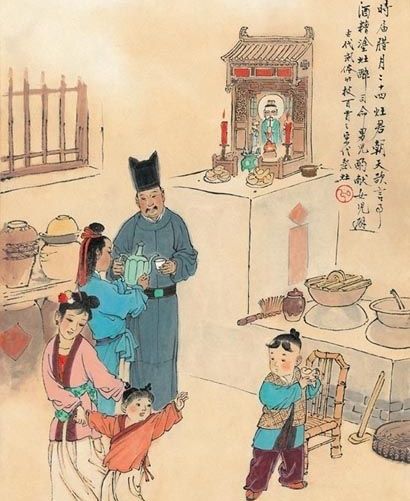
Worshipping the God of Kitchen was an ancient custom starting from Spring and Autumn & Warring States periods and became mature in Han dynasty. Although it was not scientific, the custom lasted for thousands of years and is still popular among the folks.
The Kitchen God is the god in charge of kitchen. He was sent by heavenly emperor to supervise the good and the evil in the world. It is said that the Kitchen God would fly to the heaven court and report to the Great Jade Emperor about the good deeds and bad deeds done by the family.
Hoping that the god would say something favorable to the family which could bring bless and good fortune, the folks would provide offering to the Kitchen God. The offering ritual is known as “worshipping the God of Kitchen”.
Although the custom varies in different places, peoplewould all clean the kitchen and cooking range, and put wine, fruit and cakes in front of the statue of the Kitchen God. They would also burn three joss sticks and offer him maltose so as to seal the Kitchen God’s mouth and stop him from saying something unpleasant.Or people would put the wine making leftovers to the god to make him drunk.
After the worshipping ceremony,the picture of the Kitchen God would be torn down and burnt,symbolizing sending him off to Kitchen God report to the Great Jade Emperor.
As the old picture of the Kitchen God was burnt,people would need to paste a new picture of the Kitchen God when they are pasting new spring scrolls.When people are buying the picture of the Kitchen God,they should sayinviting the Kitchen God instead of buying it,in order to show their respect.Kitchen God picture is woodcarving print.There are four colors of printing plate including yellow,green,black and red.The pictures also have different versions,yet generally the 24 solar terms are put on the picture to remind farmers of the time for farming.
